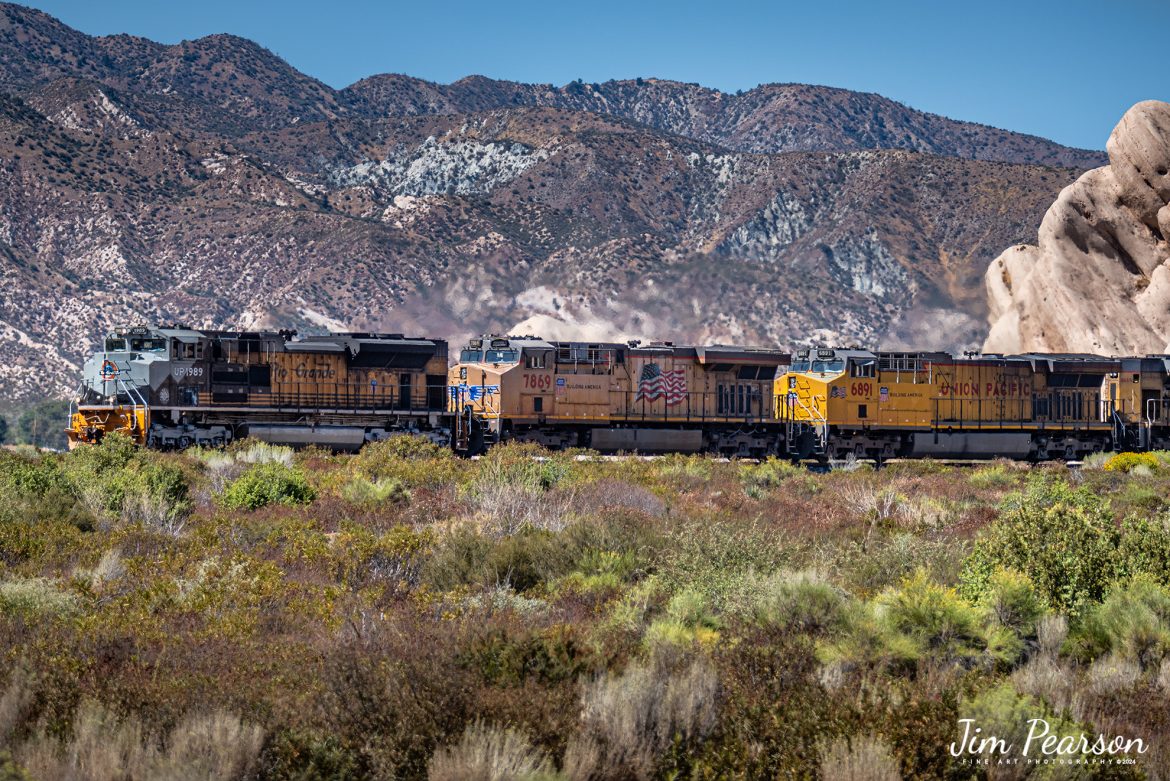I didn’t have a clue that Union Pacific 1989, Rio Grande Heritage Unit, was leading this eastbound freight until it appeared from behind Mormon Rocks in the Cajon Pass on September 24th, 2024.
I was set up on the BNSF double track below the UP line as there was another BNSF train approaching there. I had to scramble and switch from the video I was planning to shoot and pull up my D810 with the 70-300mm on it to grab this and a couple other shots before it disappeared behind brush and hillside. I would have much rather had it coming out of Mormon Rocks, but it wasn’t meant to be, I guess.
According to the Union Pacific Website: Incorporating historic colors and graphic elements of the Denver & Rio Grande Western Railroad, No. 1989 pays tribute to the men and women of the railroad who “went everywhere the hard way.”
Founded by Gen. William J. Palmer, a Union veteran of the Civil War, the Rio Grande started building a narrow-gauge line south from Denver in 1871 toward Mexico. At its peak mileage in 1917, the Rio Grande was operating nearly 6,000 miles of track.
On-line coal, bridge traffic with friendly connections, and the opening of the 6.2-mile Moffat Tunnel in 1928 that dramatically shortened its Denver-Salt Lake Route, the Rio Grande became known for its competitive spirit and mountain scenery. The “Grand Canyon of the Arkansas River,” known as the Royal Gorge, was one of the highlights on the route through the Rockies when The Denver & Rio Grande was known as the Scenic Line of the World.
Rio Grande Industries purchased Southern Pacific Lines on Sept. 12, 1988, and combined the systems on Oct. 13, 1988, operating under the name Southern Pacific. Union Pacific and Southern Pacific merged on Sept. 11, 1996.
According to Wikipedia: The Union Pacific Railroad owns one track through the pass, on the previous Southern Pacific Railroad Palmdale cutoff, opened in 1967. The BNSF Railway owns two tracks and began to operate a third main track in the summer of 2008. The railroads share track rights through the pass ever since the Union Pacific gained track rights on the Santa Fe portion negotiated under the original Los Angeles and Salt Lake Railroad.
Tech Info: Nikon D810, RAW, Nikon 70-300 @ 175mm, f/5.3, 1/800, ISO 100.

